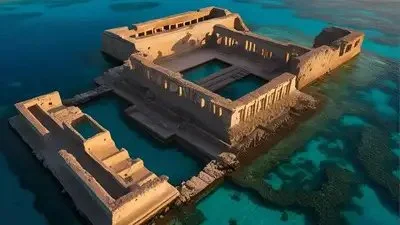A significant archaeological discovery beneath the Gulf of Khambhat, off India’s western coast, suggests the existence of an ancient submerged city that could be older than the Harappan civilization. Unearthed from the seabed, this site indicates the possibility of a sophisticated prehistoric settlement, challenging current historical understandings of early human civilization timelines.
The revelation has ignited academic interest, as it implies that organized human societies existed much earlier than previously documented. If confirmed, this finding could necessitate a significant revision of the evolution of ancient civilizations, expanding our conception of humanity’s past and the origins of urban development.
However, the discovery is not without controversy. Some archaeologists question the dating and interpretation of the site, citing concerns over the methods used in its excavation and the association of artifacts with the structures. The debate underscores the need for further research and analysis to validate the site’s significance and its place in the chronology of ancient civilizations.
This potential underwater city adds to the growing body of evidence that suggests advanced civilizations may have existed in the Indian subcontinent earlier than previously thought, prompting a reevaluation of historical narratives and timelines.







